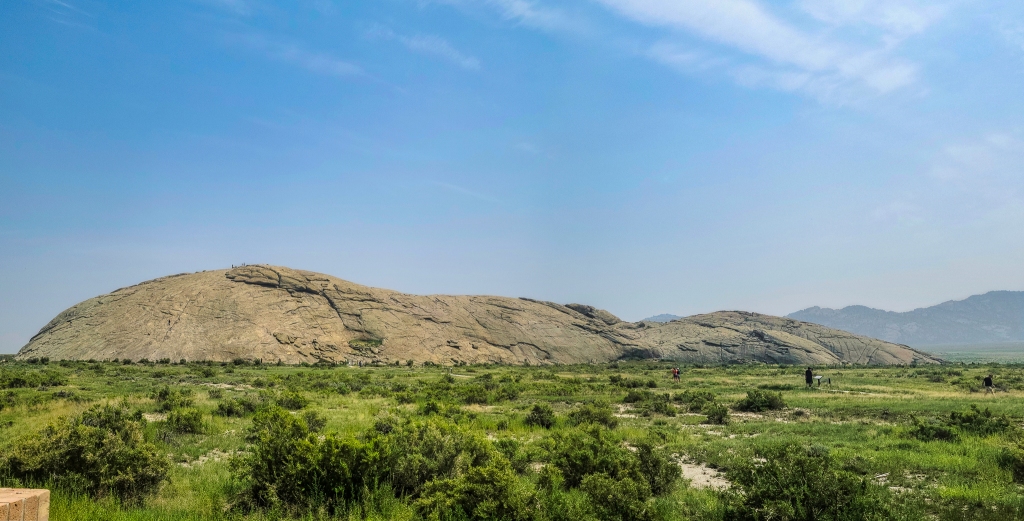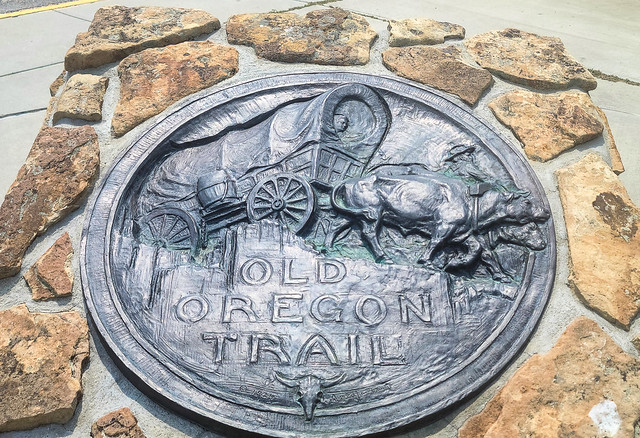
Alcova, Wyoming.
On our way home from Colorado in the summer of 2021, we were exploring southern Wyoming. After staying in Rawlins for the night, we headed north on US 287 with the goal of stopping at Independence Rock on our way to Casper, Wyoming, and then home. Taking a right on Wyoming highway 220, after traveling around 20 miles (32 km), about halfway to Alcova, we could see the large outcropping of rock that became an overnight stop for thousands of travelers on the wagon trains out of Fort Laramie in the mid-1800s.
The photo above is best viewed on my Flickr site where it is more easily read. You can get there by clicking on the image. Then hit the Back arrow on your browser to get back here. The rock outcropping is some 1,900 feet (580 m) long by 850 feet (260 m) wide. Travelers carved their names and messages into the granite to mark their passage on the journey.
From the rest stop, there is a path with interpretive signs that eventually circles the giant outcropping. According to the website here, the history of those who passed by leaving their names and dates is easy to view. I admit that we did not take that walk. Also, hiking on the rock is allowed, but please avoid walking across the historic markings left by travelers more than a century and a half ago.
The Oregon Trail was about 2170 miles (3492 km) from the Missouri River at Independence Missouri to the Willamette Valley in Oregon. You can find a map of the Oregon Trail here.
In 1849, J. Goldsborough Bruff led a party of 16 wagons and 64 men along the Oregon Trail to California. He wrote a journal of the trip. His July 26, 1849, entry made note of his stop at Independence Rock:
“reached Independence Rock . . . at a distance looks like a huge whale. It is being painted & marked every way, all over, with names, dates, initials, &c – so that it was with difficulty I could find a place to inscribe it.”
https://www.nps.gov/places/000/independence-rock-state-historic-site.htm
To view the images in 2K HD on my Flickr site, you’ll find the album of photos here.
John Steiner




[…] Today, Independence Rock is part of the Independence Rock State Historic Site, managed by the Wyoming Division of State Parks and Historic Sites. The site features a footpath that circles the base of the rock, interpretive exhibits detailing the history of the trails, visible wagon wheel ruts, and the numerous emigrant inscriptions etched into the rock. Visitors can hike on the rock, although touching or stepping on the inscriptions should be avoided as they are fragile. I featured a more detailed set of images from an earlier visit to the historic site here. […]